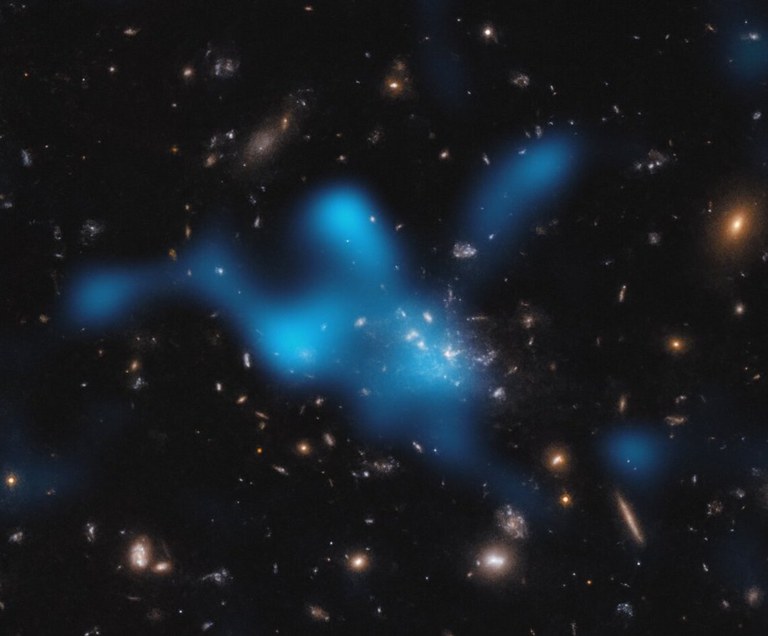Birth of a very distant cluster of galaxies from the early Universe
 |
Using band 3 observations with both the 12-m and 7-m arrays of ALMA, Di Mascolo and collaborators discovered a large reservoir of hot gas (comprising the “intracluster medium”, or ICM for short) in the still-forming galaxy cluster around the Spiderweb galaxy (PKS 1138-262) at z=2.156 — the most distant detection of such hot gas yet. Despite being the most intensively studied protocluster, the presence of the ICM has remained elusive. This result, published in Nature, further reveals just how early these structures begin to form. Previously, the ICM had only been studied in fully-formed nearby galaxy clusters. Di Mascolo’s team detected the ICM of the Spiderweb protocluster through what’s known as the thermal Sunyaev-Zeldovich (SZ) effect. This effect happens when light from the cosmic microwave background — the relic radiation from the Big Bang — passes through the ICM. When this light interacts with the fast-moving electrons in the hot gas it gains a bit of energy and its colour, or wavelength, changes slightly, allowing one to infer the existence of the hot intracluster gas, and estimate its mass and map its shape. This finding shows that the Spiderweb protocluster is indeed expected to turn into a massive galaxy cluster in around 10 billion years, growing its mass by at least a factor of ten. In the image the detected hot gas is depicted as an overlaid blue cloud on top of an HST (ACS/WFC F475W and F814W) observation. |
